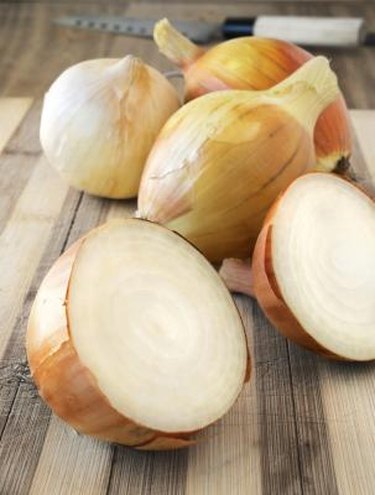
The glycemic index ranks carbohydrate food sources depending on how quickly they raise blood sugar levels. Foods are assigned a number between 0 and 100; higher numbers indicate the food will release energy quickly, causing blood glucose levels to elevate. The glycemic index, or GI, was originally introduced to help people with diabetes make food choices that would not cause large fluctuations in their blood sugar levels.
Effects
Video of the Day
Foods assigned with a GI rank of under 55 are consider low-glycemic foods and will release energy slowly into the bloodstream. Low-GI foods are beneficial for people with diabetes, and also have been found to help with weight control, as after eating a low-GI food you are likely to feel full for longer. A food with a rank of 70 or higher is a high-glycemic food, which will cause sugar levels to rise rapidly. When this occurs, the pancreas will release insulin to help get the sugar to your cells where it can be used as energy. A person with diabetes is not able to produce enough insulin to control blood sugar levels; therefore eating too many high-GI foods can be dangerous if you have diabetes.
Video of the Day
GI of Onions
The majority of vegetables have a low-GI ranking and can be eaten freely without causing fluctuations in blood sugar levels. One of the few vegetables that is not low-GI is the potato, which particularly when baked or mashed, ranks very high on the glycemic index. Onions have a rank of 10, and therefore are considered to be a low-GI food.
Types
Depending on the variety, onions vary considerably in size, color and shape. Globe-shaped onions are classified as spring or summer onions, and are grown in warmer climates. The taste is usually sweeter and milder than storage onions, which grow in colder climes and after they have been harvested are usually left to dry for several months. They tend to have a stronger flavor and are named by their color, such as red onions. Spanish onions are also a storage onion. Other common types of storage onions are the scallion -- also known as the green onion -- and the pearl onion.
Benefits
Onions are a rich source of chromium, vitamin C and dietary fiber. Chromium is a trace mineral that can help control glucose levels, as it aids in providing blood sugar to cells and therefore can increase sensitivity to insulin. According to the World's Healthiest Foods, research indicates that eating onions regularly may also lower the risk of some cancers.
Expert Insight
Sandra Woodruff, MS, RD, author of "The Good Carb Cookbook: Secrets of Eating Low on the Glycemic Index," says the glycemic index is useful as part of a diet strategy, but it should be remembered that many foods that have a low-GI ranking cannot be considered healthful. Low-GI candy bars such as Snickers are a good example. Woodruff recommends taking the total amount of calories and carbohydrates into consideration when making dietary choices.